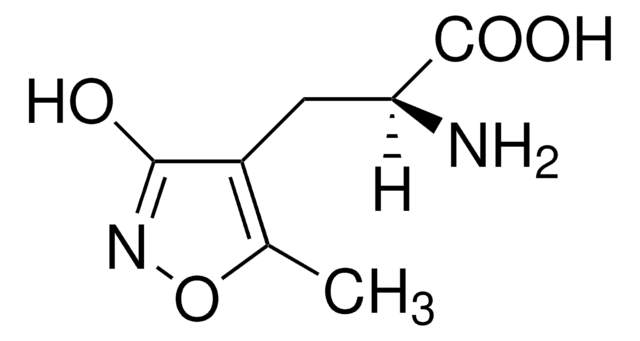C9847
Cyclothiazide
Sinônimo(s):
6-Chloro-3,4-dihydro-3-(2-norbornen-5-yl)-2H-1,2-4-benzothiadiazine-7-sulfonamide 1,1-dioxide
About This Item
Produtos recomendados
forma
powder
Nível de qualidade
originador
Eli Lilly
temperatura de armazenamento
2-8°C
cadeia de caracteres SMILES
[H][C@@]12CC(C3Nc4cc(Cl)c(cc4S(=O)(=O)N3)S(N)(=O)=O)[C@@]([H])(C1)C=C2
InChI
1S/C14H16ClN3O4S2/c15-10-5-11-13(6-12(10)23(16,19)20)24(21,22)18-14(17-11)9-4-7-1-2-8(9)3-7/h1-2,5-9,14,17-18H,3-4H2,(H2,16,19,20)/t7-,8+,9?,14?/m0/s1
chave InChI
BOCUKUHCLICSIY-QJWLJZLASA-N
Informações sobre genes
human ... CA1(759) , CA4(762) , GRIA1(2890) , GRIA2(2891) , GRIA3(2892) , GRIA4(2893)
rat ... Gria1(50592)
Procurando produtos similares? Visita Guia de comparação de produtos
Descrição geral
Aplicação
Ações bioquímicas/fisiológicas
Características e benefícios
Código de classe de armazenamento
11 - Combustible Solids
Classe de risco de água (WGK)
WGK 2
Ponto de fulgor (°F)
Not applicable
Ponto de fulgor (°C)
Not applicable
Equipamento de proteção individual
dust mask type N95 (US), Eyeshields, Gloves
Certificados de análise (COA)
Busque Certificados de análise (COA) digitando o Número do Lote do produto. Os números de lote e remessa podem ser encontrados no rótulo de um produto após a palavra “Lot” ou “Batch”.
Já possui este produto?
Encontre a documentação dos produtos que você adquiriu recentemente na biblioteca de documentos.
Artigos
DISCOVER Bioactive Small Molecules for Neuroscience
Nossa equipe de cientistas tem experiência em todas as áreas de pesquisa, incluindo Life Sciences, ciência de materiais, síntese química, cromatografia, química analítica e muitas outras.
Entre em contato com a assistência técnica








